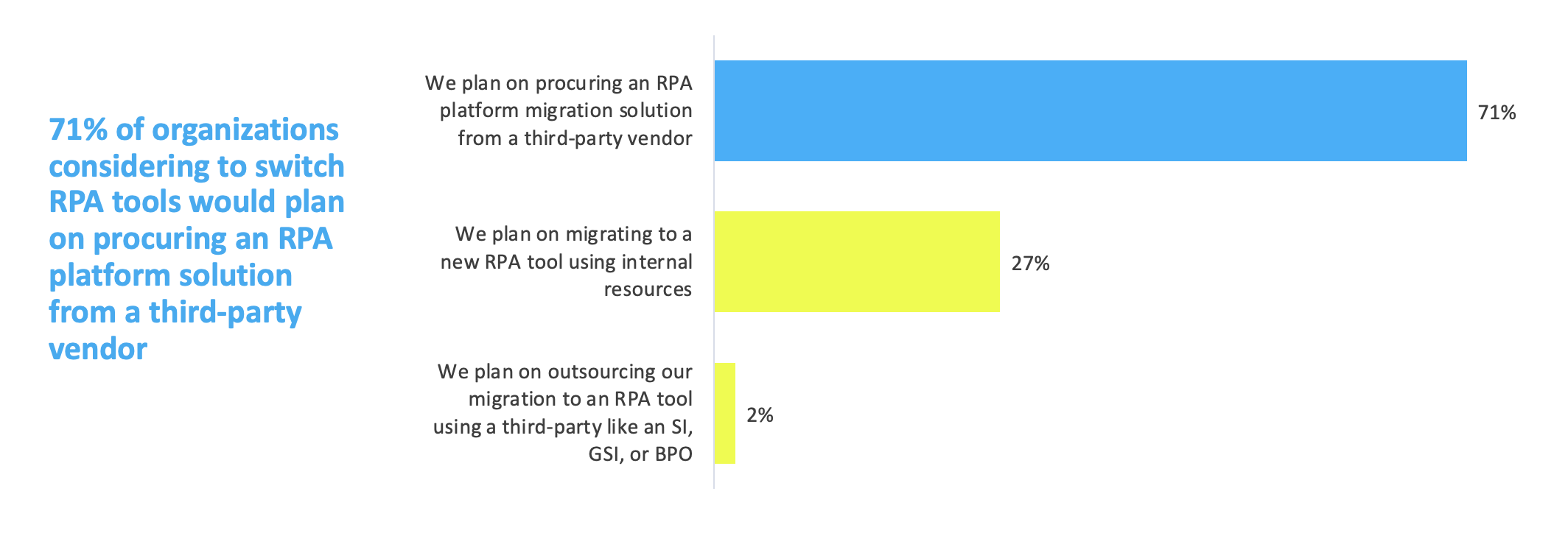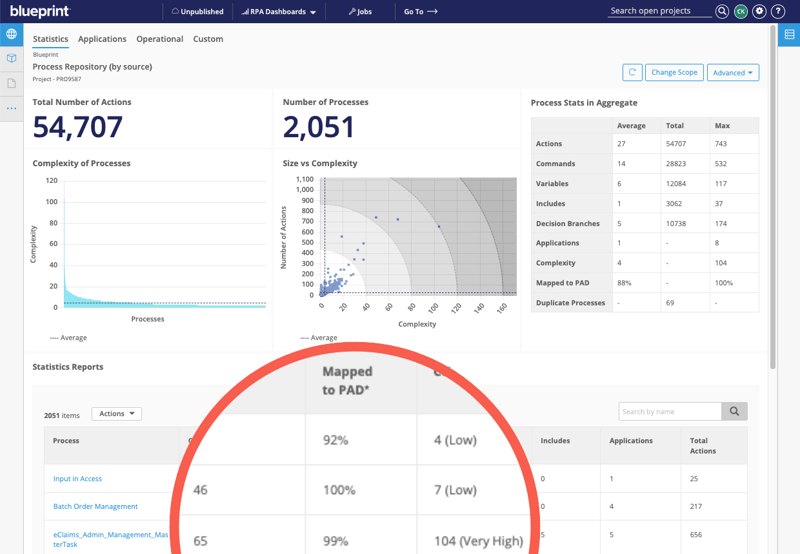RPA Migration Horror Stories and How to Avoid Them
Without the help of purpose-built technology and years of experience, RPA migrations can be incredibly complex and challenging. Unfortunately, many organizations learn that the hard way. Eager and full of confidence, they try to switch RPA platforms and migrate their RPA estates manually. Quickly, they run into a quagmire of complexities and delays that inflates their budget and ruins their projected timelines.
The reason so many organizations and service integrators turn to Blueprint to dramatically simplify and accelerate their RPA migrations is to avoid the headaches and nightmares so many companies have already experienced when they’ve tried to do it alone.
From our experience, here are some of the worst RPA migration horror stories we’ve encountered to date.
RPA Migration Horror Stories
Story #1 – Paying for Failure
One major and successful organization that we recently worked with approached Blueprint precisely because they had attempted to switch RPA platforms manually and by themselves.
The project got so out of hand in terms of budget and projected completion dates that they abandoned it altogether. They stuck with their underperforming legacy RPA tool in the meantime to minimize their losses.
When performing a retrospective on why their RPA migration had encountered so many debilitating challenges, they decided to hire a full-time consultant to map out an RPA migration plan on the off chance they attempt it again sometime in the future.
Their experience was so bad in attempting to switch RPA platforms and migrate their automation estate that it warranted a new FTE (full-time employee) whose sole responsibility was to build a theoretical RPA migration plan that may or may not have been implemented in the future.
Fortunately, this organization found Blueprint and their RPA migration nightmare became more of a distant memory as their budget was slashed and their execution timeline was a fraction of what they had anticipated manually.
Story #2 – A Few Months Turns Into A Few Years
One of the most common snags RPA migration projects experience are timelines that exponentially grow as soon as the initiative gets off the ground. One organization we recently completed an RPA migration for recounted what happened when they attempted to perform the migration manually with internal resources.
Initially, this company anticipated their migration would take 3-5 months to complete in-house, however, as soon as they started to do all the migration work, they calculated it would actually take them 5 years to finish the project. Naturally, this is when they explored RPA migration solutions and experts and found Blueprint.
This organization isn’t the only company we’ve encountered that has procured Blueprint’s RPA Migration Solution because of vastly underestimated project timelines, but it is one of the most extreme cases we’ve come across.
Another unfortunate side-effect of under-estimated RPA migration timelines are operating costs. While switching RPA platforms, organizations are forced to perform parallel runs on two platforms—the origin RPA tool they’re leaving and the new, destination RPA platform they’re switching to so as not to experience a complete outage on their automation practice. Having a timeline that increases from just one year to two means an additional year of paying double the licensing and operating costs for two RPA platforms which dramatically inflates your migration budget as well.
To combat budgets and timelines skyrocketing, organizations are now distributing RFPs (requests for proposals) to better manage these crucial project components and better understand exactly what they’re getting themselves into, how long it will take, and just as important, how much it will cost.
This is one area where RPA migration solutions like Blueprint really shines.
How to Avoid RPA Migration Horror Stories
The best way to avoid an RPA migration nightmare is to procure a purpose-built technology like Blueprint. According to recent research that Blueprint performed, 71% of organizations considering switching RPA vendors are planning to do so by procuring an RPA migration solution from a third party, and there’s good reason for that.

Blueprint’s RPA Migration solution reduces the cost and effort of switching RPA platforms by 60-75%. The ways Blueprint is able to slash the cost and timeline of RPA migrations is multi-dimensional.
For starters, Blueprint automatically maps and converts the majority of your RPA estate into your destination RPA platform leaving you with minor corrections and adjustments to make to the code.

Upon importing your RPA estate into Blueprint, you also get a host of analytics and dashboards with rich insight that helps you strategically plan and execute your RPA migration with precision and speed. You can know how much of your code has been automatically mapped into your destination RPA platform and which automations require attention, including an estimate of the effort for those interventions.
For more information on how to strategically plan an RPA migration to avoid the horror stories countless others have experienced, download the Guide to RPA Migrations E-Book .
Share this
Recent Stories

How to Estimate a Manual RPA Migration

How to Calculate the Cost of Automation Re-platforming


